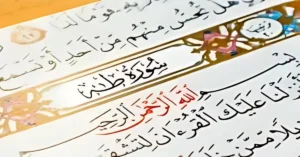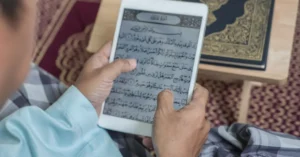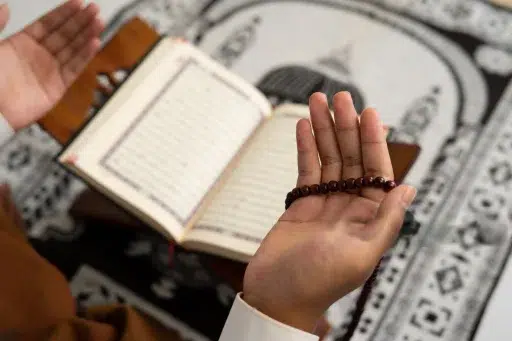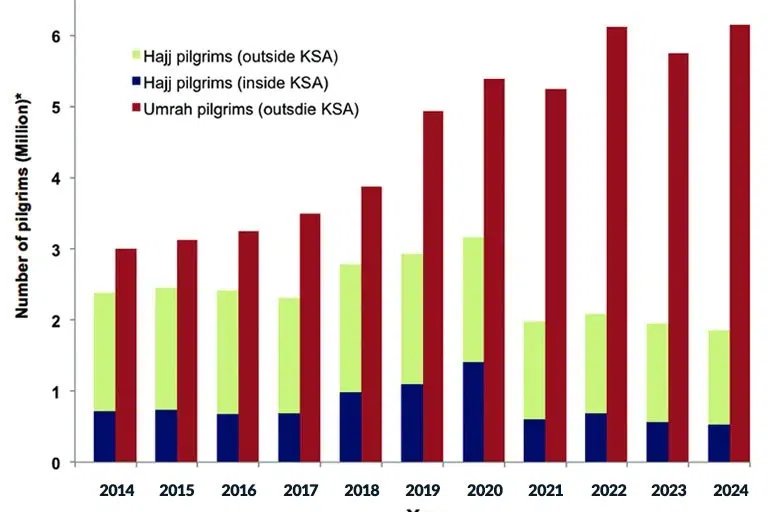Islamic Prayer Guide
Assalamu Alaikum, dear reader! Welcome to this exciting journey into the heart of Islamic prayer, Salah. Get ready to explore a comprehensive guide that will take you step-by-step through this beautiful act of worship. Whether you’re new to Salah or looking to deepen your understanding, we’ve got you covered! Together, we’ll learn about A Comprehensive Guide to Prayer in Islam and the meaning behind each element of the prayer.
Read our other for performing the prayer in Congregation.
From the ritual purity of ablution (wudu) to the heartfelt intentions in our hearts, we’ll unravel the essence of this spiritual connection with Allah. So, grab a cup of tea and get ready to dive into the world of Salah. Let’s make this journey one of enlightenment and heartfelt connection with our Creator. Bismillah, let’s begin!
Read in-depth about the Jummah Prayer.
Purification (Wudu or Ghusl)
Perform ablution (wudu) by following these steps:
Begin by saying “Bismillah” (In the name of Allah).
Wash your hands up to the wrists three times.
Rinse your mouth three times.
Cleanse your nostrils by sniffing water into them and then blowing it out.
Wash your face three times, from the hairline to the chin and from ear to ear.
Wash your right arm up to the elbow three times, followed by the left arm.
Wipe your head with wet hands, passing them over the entire head once.
Wipe the inner sides of the ears with your index fingers and the outer sides with your thumbs.
Wash your feet up to the ankles, starting with the right foot, three times.
If you are in a state of major impurity, such as after sexual intercourse, menstruation, or postnatal bleeding, perform a full body wash (ghusl) instead of wudu.
Intention (Niyyah)
Formulate the intention in your heart for the specific prayer you are about to offer. Though not spoken aloud, the intention should be sincere and focused on worshiping Allah.
Takbir al-Ihram (Opening Takbir)
Raise your hands to the ears and say “Allahu Akbar” (Allah is the greatest) to begin the prayer. This is called the Takbir al-Ihram.
Standing (Qiyam)
Stand upright, facing the qibla (the direction of the Kaaba in Mecca).
Recite the opening supplications, such as “Subhanaka Allahumma” (Glory be to You, O Allah), followed by the Ta’awwudh (seeking refuge in Allah from Satan) and the Basmala (saying “Bismillah” – In the name of Allah).
Recitation of the Quran
Recite Surah Al-Fatiha (the opening chapter of the Quran) in every unit (rak’ah) of the prayer.
Recite additional verses or chapters from the Quran after Al-Fatiha, such as Surahs or portions of Surahs.
Bowing (Ruku’)
While saying “Allahu Akbar,” bow down, place your hands on your knees, and keep your back straight.
Glorify Allah by saying “Subhana Rabbiyal Adheem” (Glory be to my Lord, the Almighty) three times or more.
Rising from Bowing (Sujud)
While saying “Sami Allahu liman hamidah” (Allah hears those who praise Him), raise back up to a standing position.
Say “Rabbana lakal hamd” (Our Lord, praise be to You).
Prostration (Sujud)
While saying “Allahu Akbar,” go into prostration, placing your forehead, nose, hands, knees, and toes on the ground.
Say “Subhana Rabbiyal A’la” (Glory be to my Lord, the Most High) three times or more.
Sitting between Prostrations (Jalsa)
After the first prostration, sit briefly, keeping your feet upright, and recite supplications or praises to Allah.
Then, go into the second prostration, repeating the same words.
Sitting for the Final Tashahhud
After the second prostration of the last unit (rak’ah) of the prayer, sit back on your left foot.
Recite the Tashahhud, a collection of blessings and prayers for the Prophet Muhammad, and also supplicate to Allah and seek His forgiveness.
Read our blog on Forgiveness through Istighfar, click on the Given Link: Doing Istighar
Offering Salutations (Salam)
To conclude the prayer, turn your face to the right and say “Assalamu alaikum wa rahmatullah” (Peace be upon you and the mercy of Allah).
Then, turn your face to the left and repeat the same greeting.
This is a comprehensive guide to Prayer in Islam.
Conclusion
The method of offering Salah involves purifying oneself through ablution (wudu) or full body wash (ghusl). The prayer begins with the intention (niyyah) in the heart and the Takbir al-Ihram, followed by standing upright and reciting supplications. The recitation of the Quran, including Surah Al-Fatiha, takes place in each unit of the prayer. Bowing (ruku’), rising from bowing, prostration (sujud), and sitting between prostrations (jalsa) are performed while praising and glorifying Allah. The final sitting for the Tashahhud involves reciting blessings and prayers for the Prophet Muhammad and seeking forgiveness from Allah. The prayer concludes with offering salutations (salam) by turning the face to the right and left, expressing peace and blessings. Through this process, Muslims establish a connection with Allah and seek His guidance, forgiveness, and blessings in their daily lives.









